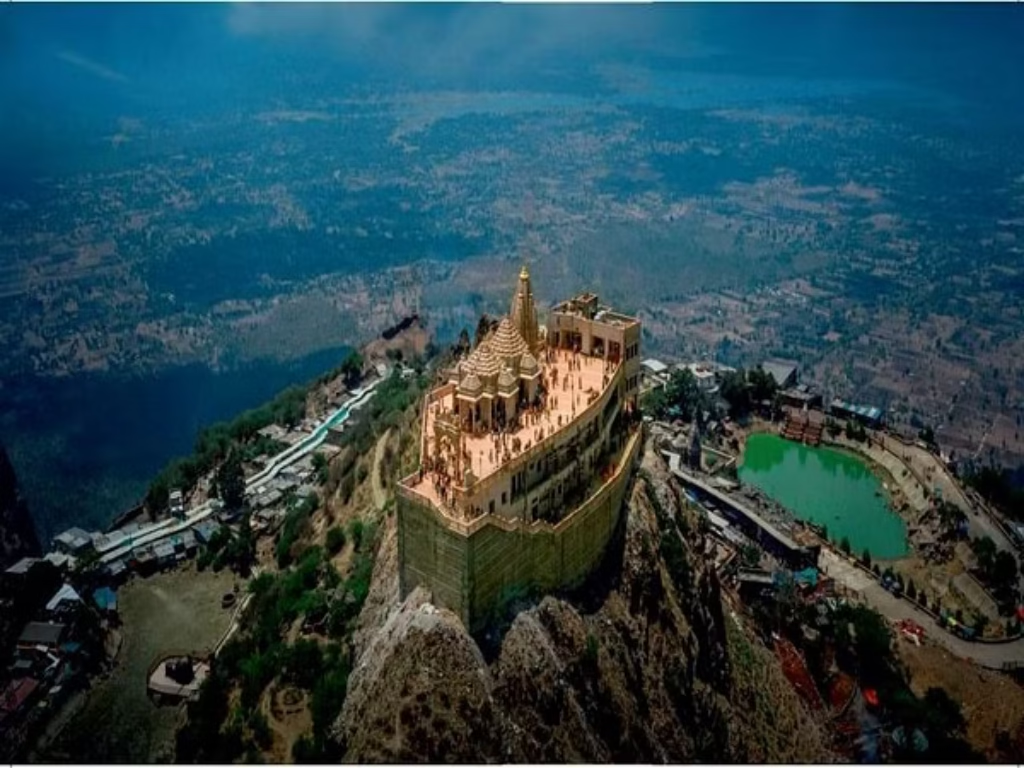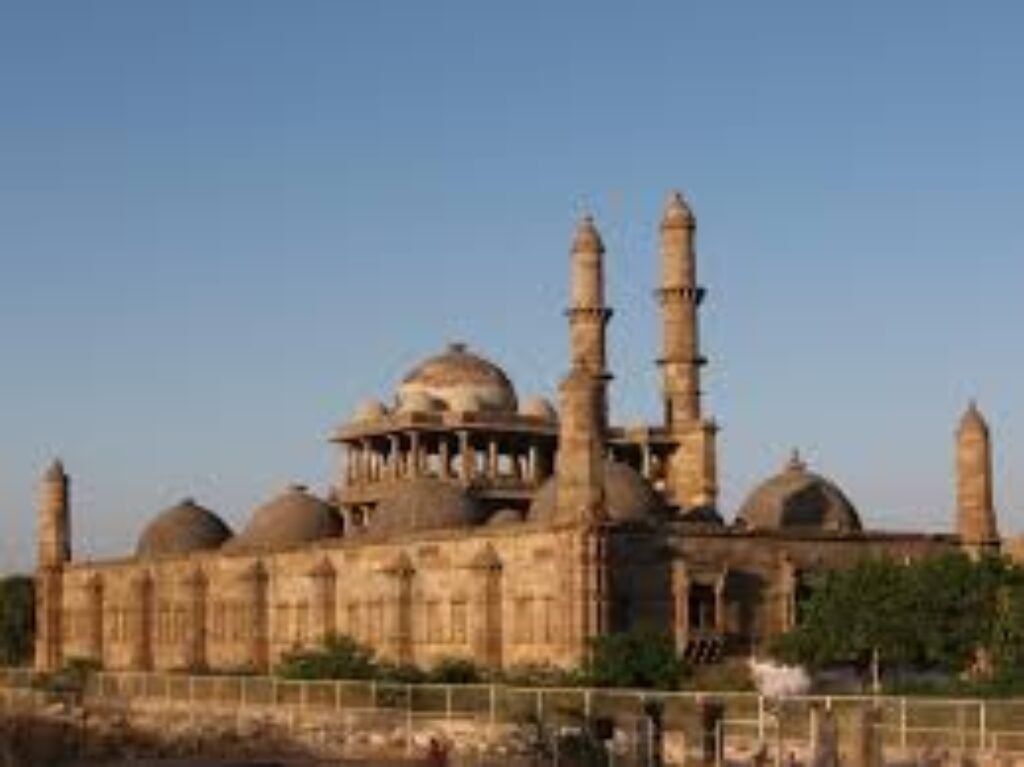
Pavagadh is a crucial religious and historic locale situated in Panchmahal district, Gujarat. It comprises part of the diverse Champaner-Pavagadh Archaeological Park, a UNESCO World Heritage Site blending Hindu and Islamic architectural magnificence from the eighth through sixteenth centuries.
It is a unique destination and consists of various aspects of history, mythology, and cultural importance, which keep not only pilgrims but also historians and tourists glued.
The expansive Champaner Archaeological Park, designated a UNESCO World Heritage site, blankets the hillsides with a harmony of Hindu and Islamic architectural gems, from intricate mosques such as the towering Jami Masjid and intricate Kevada Masjid to stepwells beautifully carved into the earth and remnants of the old city of Champaner that have withstood the test of time.
Tourists can discover ancient temples, fortresses, and mosques such as the Jami Masjid and Kevada Masjid that showcase architectural syncretism. Particularly during monsoons, the vivid greenery enhances its natural charm, offering a delight for both devotees seeking spirituality and history buffs, or nature lovers, a place to unwind amidst beauty. One can trek or take a ropeway to reach the hill, where they will be greeted by beautiful views.
Kali Mata Temple, one step ahead of Pavagadh Hill, is a well-known temple in Gujarat. The temple is a significant Shakti Peetha in Hindu mythology, where it is believed that the toe of Goddess Sati fell, which made the place energised and worshipped dedicated to Goddess Mahakali, goddess Durga herself fiercest and most powerful incarnation. Taking a moment to enjoy their beauty, the temple is located about 800 meters above sea level and provides sweeping views of the surrounding landscape, adding to its calm and majestic atmosphere.
Visit More: Siddhivinayak Temple
Table of Contents
Cultural And Religious Importance
Ancient Origins:
Local legend explains the name as coming from Pavagadh, in which the mountain was a piece of Himalaya that Lord Hanuman carried to battle during the Ramayana. The city has been a center of religion and culture since at least the 8th century.
Solanki Era:
Pavagadh had been ruled by the Solanki dynasty of Gujarat in the 10th and 11th centuries. The area was a thriving Hindu kingdom, and the Mahakali Temple acted as an important centre for it.
Khilji and Mughal Period:
Then, in the late 1400s, Mahmud Begada of the Gujarat Sultanate captured Pavagadh. With the amalgamation of Islamic architecture with prevailing Hindu background, he converted that area into Champaner, built as a walled city. During this time, a large number of mosques, palaces, and stepwells were built, which still stand today.
UNESCO World Heritage Status:
The unique amalgamation of cultural and architectural heritage found in the Champaner-Pavagadh Archaeological Park was inscribed as a UNESCO World Heritage Site in 2004.

How To Visit
By Road:
From Vadodara:
Distance: 50 km.
Track: NH48, at that point take SH87 Halol and Pavagadh
How to get there: one~1.5 hr by car/bus
By Train:
Nearest Railway Stations:
Vadodara Junction (50 km) – Big station with good connectivity.
Godhra Railway Station (28 km) – Closer but a few train options
From both, taxis or buses or share auto is available for Pavagadh also.
By Air:
Closest Airport: Vadodara Airport (50 kms away).
Vadodara is well connected with all major Indian cities such as Delhi, Mumbai and Bangalore through regular flights.
Pavagadh is where you can hire whatever taxi or public transport you want to take from the airport.
Nearest City:
Vadodara, the nearest metropolitan city, is at a distance of around 50 km. Buses, taxis, and private vehicles are available from that point.
Reaching the Summit:
A hike up the incline provides a stunning perspective along with fresh air and exercise, taking between two to three hours at a leisurely pace.
Nearest Attractions

Kevada Masjid

Hathni Mata Waterfall

Jami Masjid
FAQs:
Q1. How long does it take to fully take in all that Pavagadh holds?
A single day allows one to scratch beneath the surface of its treasures within the walls of the Mahakali Temple, lingering where archaeological ruins remain and briefly beholding neighbor spots
Q2. What should one do when touring Pavagadh?
While relaxed exercise shoes are paramount, notably if scaling is foreseen, humble clothing is urged in deference to the holy consequence of the Mahakali holy place.




